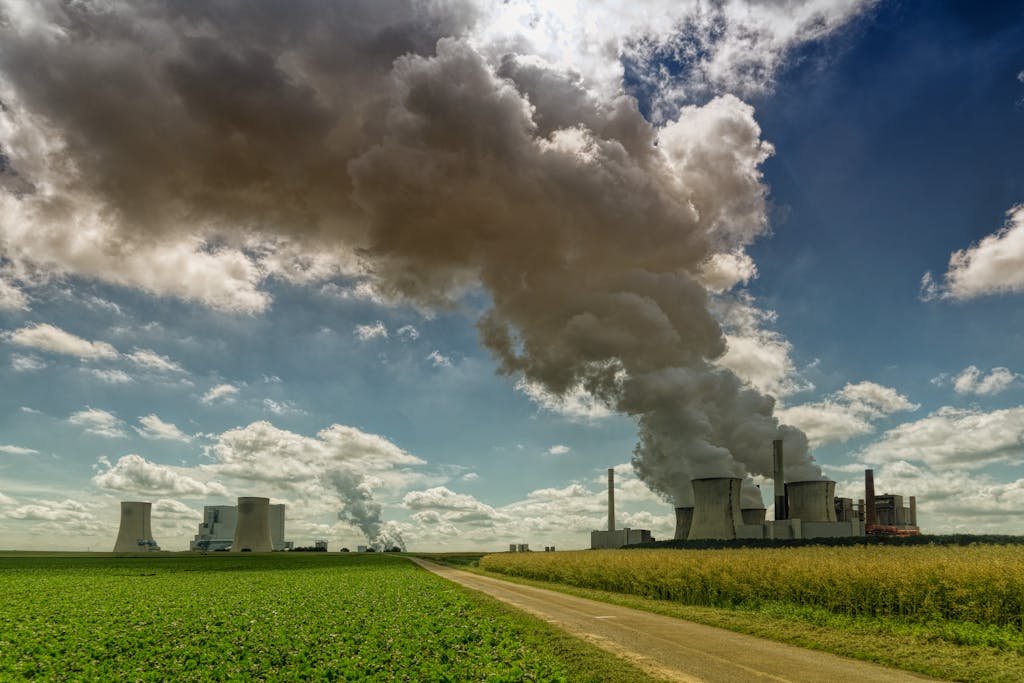Breathing Easy: A Guide to San Antonio’s Air Quality
In the recent past, air pollution has been considered a major issue in society as many cities compete to provide fresh air for their people. San Antonio Texas is one of the fastest-growing cities in the United States of America with a dramatic history and significant landmarks charming scenery and a beautiful population. Nevertheless, like many cities, San Antonio has some problems associated with keeping the air clean, fresh, and healthy.
In this comprehensive guide, I will explore the current state of air quality in San Antonio, examine the primary pollutants, discuss contributing factors, consider the health impacts, and review ongoing efforts to monitor and improve air quality in the region.
Air Quality in San Antonio
Air pollution in San Antonio has fluctuations over a year due to the changes in the seasons, the weather, and, human behavior. Even though the annual average value based on the Air Quality Index (AQI) is in the “good” class, temporary dynamic variations and certain pollutants result in moderate air contamination at certain times of the year. We can get insight into when air quality is most influenced and how residents may guard themselves during high-pollutant occasions by using these patterns of movement.
Air Quality Index (AQI)
The AQI measures air quality by evaluating the concentration of specific pollutants in the air. Ranging from “Good” to “Hazardous,” the AQI provides a clear, easy-to-understand metric that helps residents monitor air pollution levels in their area. In San Antonio:
- Annual AQI: San Antonio has an average AQI of “Good” most of the time though the AQI tends to fluctuate more during winter and fall seasons than summer.
Seasonal Variations
Air quality in San Antonio shifts with the seasons due to factors such as temperature, weather conditions, and pollution sources:
- Spring and Summer: This is mainly because from June to September; San Antonio tends to record high pollution levels, mostly rated as “Moderate” AQI. These relatively high rates are attributed to higher vehicle exhausts, enhanced industrialization, and unfavorable weather patterns that hold the pollutants near the ground. They also indicate that higher levels of sunlight and heat also lead to increased levels of Ozone common inurban areas during summer.
- Fall and Winter: As a general rule, air quality is better in the cooler months, and AQI is less likely to hover in the ‘Good’ categories. Because there are fewer chemical reactions during colder and shorter days, ground-level ozone, a warm months polluter, is less of a hazard.
Major Pollutants in San Antonio’s Air

There is a need to be acquainted with the specific pollutants that cause air pollution in San Antonio. These pollutants are dangerous to health and the environment and knowing their sources is critical to the effective management of air quality.
1. Ozone
Ground-level ozone is a major component of smog and is created when nitrogen oxides (NOx), and volatile organic compounds (VOCs) are exposed to sunlight. UVB is also a system for SVL life in detail, the good stuff that is ozone high up in the atmosphere is bad news for us when it accumulates on the ground.
- Sources: Motor vehicle emissions, industrial processes, and photochemical reactions induced by sunlight.
- Health Effects: Elevated amounts of ozone can make breathing difficult for people who suffer from asthma and other types of lung disease, and can worsen heart disease.
2. Particulate Matter (PM2.5)
Airborne particulate matter or dirt includes particles less than 2.5 micrometers in size (PM2.5): these particles can actually get into the bloodstream and cause illnesses.
- Sources: Vehicle emissions, industrial processes, construction sites, and wildfires.
- Health Effects: PM2.5 exposure is linked to respiratory diseases, cardiovascular conditions, and even premature death, especially among vulnerable populations.
3. Nitrogen Dioxide (NO2)
Nitrogen dioxide is an unhealthy gas that comes out of vehicle engines and industrial processes as well as a PVSM for ground-level ozone and particulates.
- Sources: Mainly released from motor vehicle exhaust and industrial highlighting most of the emissions.
- Health Effects: While short-term exposure can irritate the respiratory tract, long-term exposure to NO2 raises the chances of developing respiratory diseases such as infection and bronchitis.
Factors Contributing to Air Pollution in San Antonio

There are various compelling determinants that lead to air pollution in San Antonio. These include mostly the regional emissions from cars and industries and from outside sources such as fire events. This information is important because the knowledge helps in the formulation of policies that may help reduce pollution.
1. Vehicle Emissions
The population density of San Antonio is also increasing and San Antonio is a regional transportation hub which causes strong traffic on roads; therefore, vehicle emission is a major contributor to air pollution.
- Impact: Traffic fumes increase amounts of ozone and fine particles in the air during rush time and where there is congestion.
- Mitigation: Measures like encouraging the use of public transport, car-sharing, and the use of less-emission cars may help in the minimization of the effect of vehicle emissions on air quality.
2. Industrial Activity
Some of the industrial infrastructure associated with San Antonio emits pollutants such as nitrogen dioxide, sulfur dioxide, and particulate matter into the ambient air several industrial facilities in the San Antonio area discharge air pollutants into the environment, including nitrogen oxides, sulfur oxides, and particulate matter. The locations of these facilities are mostly in residential areas, and the closeness may complicate the matter of air quality problems.
- Impact: Industrial pollution not only affects the immediate vicinity but can also contribute to broader pollution issues due to the movement of air currents.
- Mitigation: This implies that emission standards need to be implemented and cleaner technologies to be promoted to lower emissions from these sources of pollution.
3. Meteorological Conditions
This paper examines the impact of climate and various meteorological factors that cause periods of high concentrations of pollutants in San Antonio’s air.
- Temperature Inversions: Rare temperature inversions which create a cap of warm air to prevent pollution from rising and diluting the air can cause pollution to rise particulate matter near the ground.
- Stagnant Air: Air quality may suffer because pollution tends to build up on days where there is little wind or indeed no wind at all, to produce smog or particulate matter in large quantities.
4. Wildfires
In rare cases, air quality in San Antonio can be impacted by smokey wilderness fires – locally or in other parts of the state. Wildfire smoke is composed of various substances such as PM2.5, carbon monoxide, and volatile organic compounds.
- Impact: When wildfire smoke drifts into the area, air quality can drop significantly, sometimes reaching unhealthy levels for sensitive groups.
- Mitigation: While controlling wildfire smoke is challenging, monitoring and issuing public health advisories during wildfire season can help residents minimize exposure.
Read Also: 9 Must-Try African Restaurants in San Antonio, TX
Health Impacts of Poor Air Quality

The effects of poor-quality air extend to the hood and is cutting across everyone regardless of age bracket with children, the elderly, and those with associated illnesses being the most affected. Some of the health problems associated with poor-quality air are listed below.
1. Respiratory Problems
Evaluations on the effects of exposure to air pollutants in the growth of diseases like asthma or other respiratory ailments depict that pollutants like ozone and PM2.5 make the ailments worse.
- Conditions Affected: Air pollution also has effects on various illnesses such as; asthma, bronchitis, and chronic obstructive pulmonary disease (COPD).
- Symptoms: Such individuals are likely to exhibit worse shortness of breath, coughing, or wheezing at any time the level of pollution is high.
2. Increased Risk of Heart Disease
Long-term exposure to pollutants like particulate matter and nitrogen dioxide has been associated with cardiovascular problems.
- Conditions Affected: Chronic exposure to clean air reduces the possibility of heart disease, high blood pressure, and stroke.
- Mechanism: Such stimuli may lead to inflammation, oxidative stress, and alteration of blood vessels and therefore increase the risk of cardiovascular complications.
3. Lung Cancer
Research indicates that increased length of time at exposure to air pollutants. more so the particulate matter with an aerodynamic diameter of less than 2.5 micrometers or PM2.5, puts one at a higher risk of developing lung cancer.
- Risk Factors: Long-term residents of the regions with high pollution levels may become prone to lung cancer.
- Preventative Measures: Minimizing exposures to particulates whose concentrations can be improved has been associated with lower lung cancer incidences.
4. Reduced Lung Function
Children and adolescents who grow up in areas with high pollution may experience stunted lung development and reduced lung function as adults.
- Long-term Impact: Reduced lung capacity and function can affect overall health and quality of life well into adulthood.
- Prevention: Reducing children’s exposure to high-pollution areas, especially during critical developmental periods, is essential.
Monitoring and Improvement Efforts

Air quality management in San Antonio is achieved through collective endeavors by a host of different organizations ranging from EPA to the local authorities and other organizations. These organizations measure the quality of air, control the release of pollutants, and advance projects to lessen the emissions.
1. Enforcement of Emission Standards
Environmental laws that seek to hold car manufacturers accountable or industries have a responsibility to lower the emissions of dangerous gases.
- Impact: Stringent implementation of emissions can reduce nitrogen dioxide by 15 to 20 percent and sulfur dioxide by 10 to 15 percent along with other hazardous gases.
- Example: Stipulating cleaner technology vehicles, including electricity, can significantly bring down the emissions in the city.
2. Promotion of Cleaner Fuels and Technologies
The governments must also switch to cleaner fuel which includes the use of natural gas or electric energy in industries or using clean energy technologies.
- Impact: Improved fuels and technologies help bring down the level of dangerous emissions in the environment.
- Examples: Wind-generated electricity and solar-generated electricity can reduce the consumption of fossil fuels hence improving the air quality.
3. Public Transportation and Carpooling
Reducing vehicle emissions is crucial, and promoting public transportation options, carpooling, and cycling can help decrease the number of vehicles on the road.
- Impact: Fewer vehicles mean lower emissions, leading to improved air quality over time.
- Programs: Incentivizing public transportation use through subsidies or creating carpool lanes are strategies to encourage people to choose these alternatives.
4. Tree Planting and Urban Greening
Trees and vegetation naturally absorb pollutants, making green spaces a valuable asset in combating air pollution.
- Impact: Planting trees in urban areas can improve air quality and provide shade, lowering temperatures and reducing ozone formation.
- Examples: Initiatives to plant more trees along busy streets and in neighborhoods can positively impact the local environment.
Read Also: 15 Top-Rated San Antonio Neighborhoods
final words
Regarding air quality, the state’s environmental situation in San Antonio reveals a combination of problem areas and improved conditions. However, based on the evidence, there is a common violation from the city which has reused a “Good” AQI but seasonal variations and some specific pollutants constitute risks to the residents. By therefore noting the emission sources and effects of health of such pollutants as ozone, particulate matter, and nitrogen dioxide, san Antonio can be in a position to take the necessary measures that help curb the level of pollution. When it comes to the measures that need to be taken to improve air quality numerous roads can be taken: from regulating emissions and supporting cleaner technologies to increasing the use of public transportation or developing more green areas.






